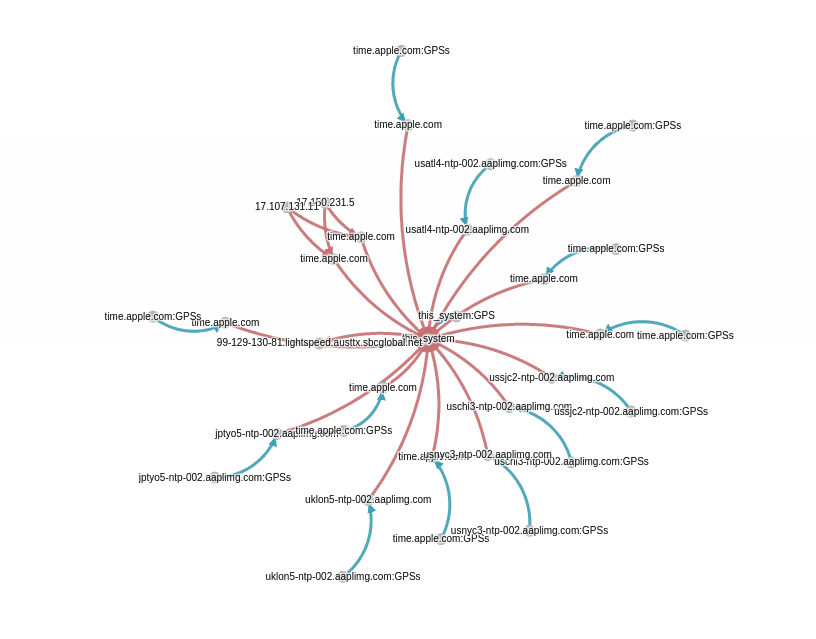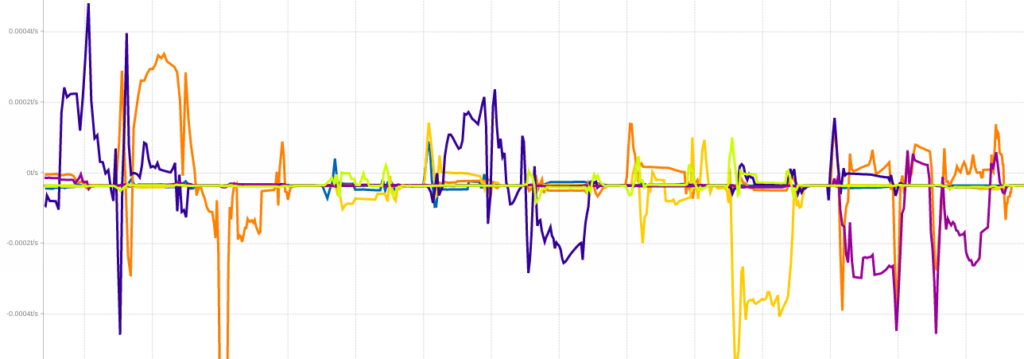Apple Watch time technology
The Apple Watch is claimed to have 50 milliseconds time accuracy
Apple says its new consumer electronic watch will synchronize to within 50 milliseconds of UTC time. Most of our customers in the financial trading sector need time to be within a microsecond – 50 thousand times better, but we were interested in what Apple is doing so we pointed TimeKeeper® at time.apple.com and looked at the time map -which is reproduced above.
Time maps are produced by TimeKeeper to visualize time synchronization networks. You can see right away that Apple has created multiple internet nodes that respond to that address (using DNS round-robin) The red arrows indicate time is being delivered via the Network Time Protocol (NTP). There is another standard called Precision Time Protocol (PTP) that does pretty much the same thing and that shows up on TimeKeeper maps as green arrows.
The lengths of those lines show relative “one way delay” – how long it takes for packets containing the time to reach our server computer at the center from the sources. The blue lines show where the sources get time from – most of these devices are reading time from the Global Positioning System (GPS) satellites. A couple of the nodes don’t say where they get time from.
The aliasing of time.apple.com is good and bad. It’s good because it removes a single point of failure – any one of these sources can fail, but a time synchronization client that has sufficient smarts – like TimeKeeper – can failover if a node fails or loses connectivity. The bad part is that these nodes may not be synchronized themselves. TimeKeeper can track multiple time sources, and gives us an accuracy graph that shows how all these different time.apple.com servers compare. You can see in the chart below that the sources spike up and down over a base time. Those peaks are about 100 milliseconds which is pretty noisy, but probably good enough for the purpose.
But you can also see how much uncertainty the internet and the servers themselves introduce. We don’t know how much of that variation is due to changes in internet routing/congestion and how much is due to the sources themselves. Since the sources are almost certainly running NTPd software to serve time, and not TimeKeeper, we know that they are going to wobble a lot. Much of the theory that PTP is better than NTP comes from the poor quality of NTPd as a time server. FSMLabs customers can get submicrosecond accuracy on either of the two protocols. The center bar in both the graph above and the one below comes from a GPS source that is on our test server so it gives us a good baseline.
Sometimes the frequency information is important too – if a server wanders off frequency and stays there long term – something was wrong or is wrong. The graph below shows that frequencies wander a little but return to the base.







